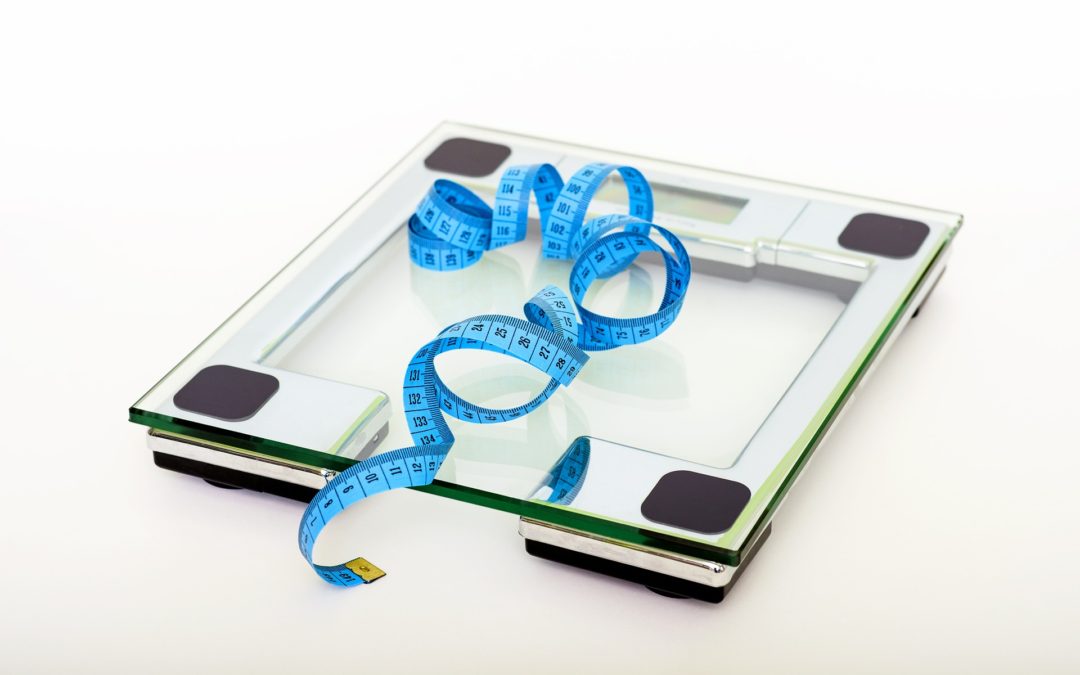
by Chantry | Jul 4, 2017 | Diet and Nutrition, Exercise
How would you like to get rid of your bathroom scale? To never again subject yourself to the angst and humiliation of stepping on and waiting for the number-that-will-determine-your-self-esteem to light up the screen.
Sounds awesome, right?!
It’s been ingrained in us from an early age to worry about our weight, however today I’d like to show you how the number on your bathroom scale is an unreliable measurement of your progress that should really be thrown out the window.
Bathroom scales are unreliable.
Take that number with a grain of salt. Your typical bathroom scale is a digital gadget with serious limitations, attempting to measure your gravitational force.
Digital scales must be recalibrated after every move. This means that if you pick up your scale and the place it down again you must press on the scale for a reading, wait for the numbers to clear, and then proceed with weighing yourself. Most people miss this step and end up with inaccurate readings.
Digital scales must be placed on a hard, flat surface. Since the reading is coming from gravitational force, the slightest inconsistency with the weight distribution into the floor could skew the reading.
Accurate scales only tell part of the story.
At the doctor’s office you’ll encounter the more accurate balance beam scale. This scale directly compares your weight (gravitational force) to counterweights. The readings from balance beam scales are more consistent and accurate than digital scales.
However…
Even an accurate reading of your weight only tells part of the story. Your weight (gravitational force) naturally fluctuates throughout every day due to in the intake and excretion of fluids and food.
A pound gained from drinking a large glass of water has no distinction from a pound gained as a result of fat storage on your body when measured on a balance beam scale. However these two weight sources will lead to two very different bodies!
Body composition is what you’re after.
Your body is composed of three things: fat, lean mass and water. An attractive, fit body is composed of a low amount of fat, ample lean mass, and healthy water levels. When you walk into the gym and tell me that you want to lose weight, what you’re really telling me is that you want to lower your percentage of body fat.
When you begin the process of fat loss, the initial drop that you see on your scale is mostly water weight. This happens as your controlled diet empties out stored energy that releases the water that is held with it. This initial drop in weight makes you feel good…
Until you get back on the scale the following week to see that your weight has barely even budged. This normal ebb and flow of body transformation nearly always brings discouragement. You feel like somehow you’re failing since that initial weight loss has now slowed to a crawl.
What’s crazy about the psychological mind game that the scale plays is that during the third week of a body transformation, when the scale shows the least impressive change, your body composition is actually cranking up to very impressive levels. So while you saw half a pound lost on the scale, behind the scenes you lost three pounds of fat.
Remember that all weight is not bad. What you don’t like to see and feel on your body is fat. As noted above, fat is not the only thing measured by your weight. Those toned muscles that you want to have will bring up the number on your scale, but as long as fat is converting to lean mass, the result is a stunning body transformation.
Pictures are more powerful than numbers!
It’s possible to measure your body fat levels using different tools. These readings will give you a clearer picture of what is taking place beneath your skin, as your body composition shifts to a lower percentage of body fat.
However, pictures are what I have found to be the most powerful measure of body transformation. A picture is truly worth a thousand body composition number readings!
When you see two images of yourself, side-by-side, and your eyes take in the differences in the shape and appearance of your arms, legs and stomach it is truly a magical moment; a moment when you understand how silly the number on the scale really is in the face of your undeniable, stunning body transformation.
If you’re ready to begin your own stunning body transformation, with the goal of lowering your body fat, feel free to reach out to me. I’m here to get you into the most spectacular shape of your life!
Call or email me today. Let’s do this!

by admin | Oct 3, 2015 | Diet and Nutrition
According to the U.S. Food and Drug Administration (2014), there are proposed changes to the Nutrition Facts Label on the majority of packaged foods sold in this country. The idea behind this is for consumers to be better educated about the nutritional contents of their foods. One area of interest is added sugars. There will be an additional line on the food label that will state the number of grams of added sugars in the food product. Added sugars are sugars that are found in foods in addition to those naturally occurring in the product. The reasons for noting added sugars on the food label were based on recommendations to decrease intake of sugars from the American Heart Association, the American Academy of Pediatrics, the Institute of Medicine, and the World Health Organization. The recommendation to decrease calorie intake from solid fats and added sugars comes from the Dietary Guidelines for Americans. This recommendation was made because people today are consuming too many calories and not eating enough nutrient rich foods. From added sugars, often referred to as “empty calories,” Americans are obtaining 16 percent of their total, daily caloric intake. These added sugars provide no nutritional value to people’s diets. Another area of interest on the new nutrition facts label is calories from fat. The new nutrition label will no longer have “Calories from Fat” on it, but “Total Fat,” Saturated Fat,” and Trans Fat” will still appear on the label (U. S. Food and Drug Administration (USDA), 2014).
A study published in the Journal of the American Dietetic Association (2010), found that for children ages two through eighteen, the majority of the calories in their diets came from pizza, grain desserts, soda and fruit drinks; these products account for 40% of the calories consumed by this age group. The recommended amount of discretionary calories for all age groups is eight to 20 percent of total calorie intake. Therefore, children are consuming between two to three times the amount of discretionary calories recommended. The researchers of this study concluded that the environment needed to change and provide children with more low calorie, healthy food choices (Reedy & Krebs-Smith, 2010).
In an effort to discover effective strategies to decrease the prevalence of childhood obesity, a 2005 national cross-sectional study of schools and students participating in the National School Lunch Program looked at the amount of calories children were consuming in sugar-sweetened beverages at school and at home. The results of this study were that students were consuming the majority of their “empty calories” from sugar-sweetened drinks at home. Since childhood obesity has such an impact on the mental, physical, and social health of the young people in our country, researchers from this study are recommending increased education for parents that would focus on the benefits of switching from sugar-sweetened beverages to unflavored, low-fat milk at meals and giving children water between meals (Briefel, Wilson, Cabili, & Dodd, 2013).
Overall, the concept of adding additional sugars and fats to foods seems illogical and unhealthy.
Both children and adults are consuming a considerable amount of empty calories every day, many of which are coming from sugary beverages and foods that are not nutrient rich. By taking away the calories from fat line on the nutritional labels, it seems that the FDA no longer thinks that calories from fat is important for consumers to note. The addition of the added sugars line, however, is a positive change on the nutritional labels because it informs consumers that these sugars were not originally in the product.
On both the current and proposed nutrition label, Total Fat, Saturated Fat, Cholesterol, Sodium, Total Carbohydrates, and Dietary Fiber are given for 2,000 calorie and 2,500 calorie diets. This may be confusing to consumers and lead them to thinking this is the amount of calories they should be consuming. A surprising fact written by the weight-loss experts at Mayo Clinic is that the majority of women are only burning 1,700 to 2,000 calories a day and the majority of men burn 2,000 to 2,600 calories per day (Jensen, 2012 p.113) These figures show that the majority of people are burning far less than the 2,000 calorie and 2,500 calorie amounts noted on food labels. Granted, the amounted calories stated on food labels are based on what people are actually eating, and not what they should be eating; this only makes it that much harder for us as nutritionists to educate people on how many calories they really should be consuming per day.
The serving sizes on the current food labels are actually based on what people ate 20 years ago, before we had an obesity epidemic. To increase the amount of serving sizes to what people are actually eating today will only give people permission to eat more. This will happen because the majority of people do not know that these amounts are what they are actually consuming not what they should be consuming. According to the weight-loss experts at the Mayo Clinic, facts that we as nutritionists already know 1 vegetable serving = 1 baseball, 1 fruit serving = 1 tennis ball, 1 carbohydrate serving = 1 hockey puck, 1 protein/dairy = 1 deck of cards or less, and one fat serving = 1 to 2 dice (Wolf, 2012 p. 81).
The new food label proposal left me with some propelling thoughts. A positive thought is that the new food label is larger in size and easier for consumers to read. This may make consumers more aware of what they are eating. A negative thought is will the increased serving size be giving people permission to eat more? Even with the immediate costs for food companies to redo the food labels, will uneducated consumers be buying more products and increasing profits for the food companies and motivating them to manufacture more foods with added sugars and increased amounts of fats? With obesity on the rise, is it really the right move to increase the amount of serving sizes on food labels?
References
Reedy, J., & Krebs-Smith, S. M. (2010) Dietary sources of energy, solid fats, and added sugars among children and adolescents in the United States. Journal of the Dietetic Association,110(10), p. 1477. doi:10.1016/j.jada.2010.07.010
Briefel, R. R., Wilson, A., Cabili, C., & Dodds, A., H. (2013). Reducing calories and added sugars by improving children’s beverage choices. Journal of the Academy of Nutrition and Dietetics, 113(2), p.269 doi: 10.1016/j.jand.2012.10.016
Jensen, M. (2012). Understanding nutrition and weight control. In P. P. Good (Ed.), The Mayo Clinic Diet (p. 113). Intercourse, PA: Good Books.
Wolf, S. (2012). No food scales of calculators needed. In P. P. Good (Ed.), The Mayo Clinic Diet (p. 81). Intercourse, PA: Good Books.
Nutrition Labeling Assignment
Dianne Cochrane
NTR 221 Food Technology Trends
April 14, 2014



